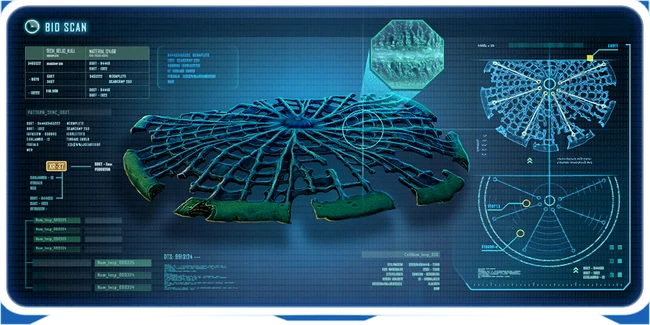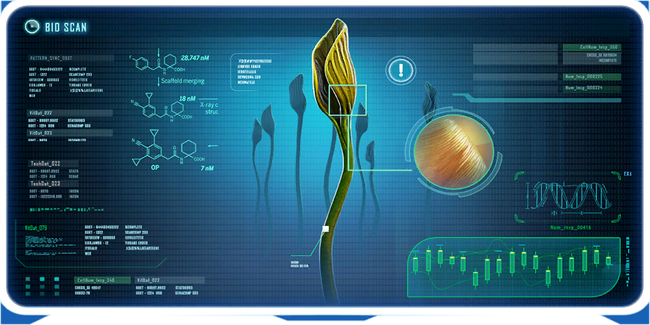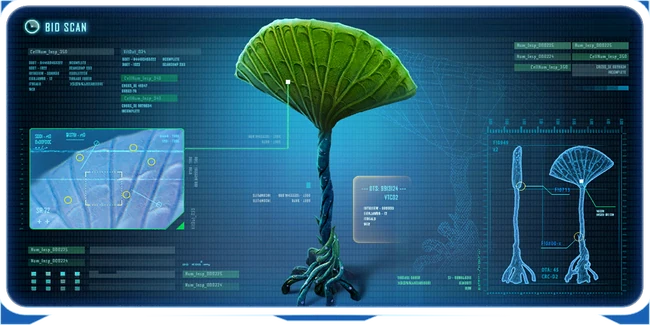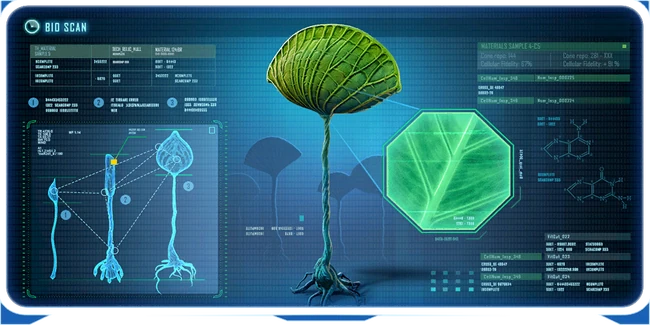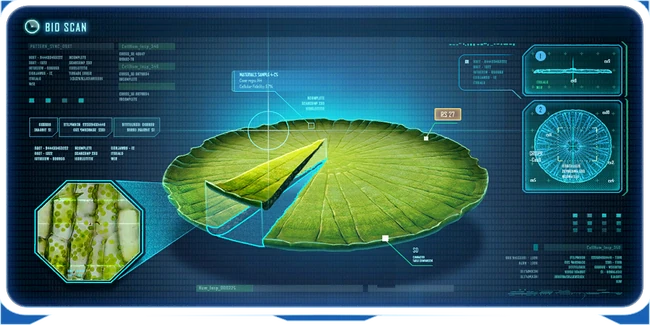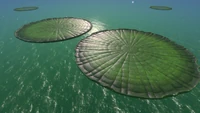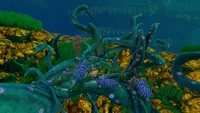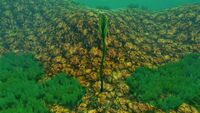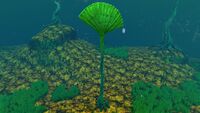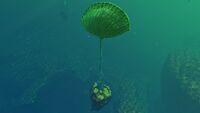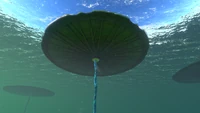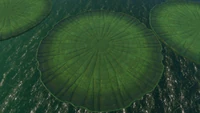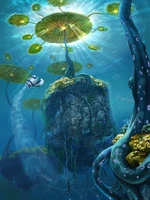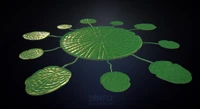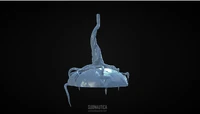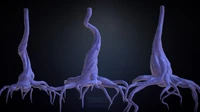Lilypads are a large flora species that create the unusual landscape of the Lilypad Islands.
Appearance[]
In its mature form, the Lilypad sports one gigantic, circular leaf that floats on top of the water's surface. The green leaf has many veins extending outwards from the center. The lengthy trunk of the lilypad hangs in the water, anchoring its roots to a large boulder to stop itself from drifting away.
The lilypad displays a multi-staged life cycle through which it changes drastically.
- It begins as a small curled leaf anchored to the ground by a thin stem. Several small shoots protrude from the ground below around it.
- The leaf then grows into a fan shape and the shoots around the base grow longer, twisting around the main stem and firmly anchoring it to the ground.
- In the third stage the leaf appears to become inflated with gas, which causes the lilypad to become buoyant, ripping the ground it was growing in away from the seabed and up towards the surface.
- At stage four it takes on the appearance of a lilypad, presumably once the gas filled lilypad reaches the surface it opens up into a huge, flat, circular leaf that sits on the surface of the water.
- Lilypads will eventually die and collapse to the seafloor. Large amounts of life can be found around the corpses and young Lilypads will begin to grow.
Uses[]
As of recent updates, Seabases can be built on top of Mature Lilypads on the ocean surface.
Data Bank Entries[]
| Fallen Lily Pad |
Eventually, mature lily pads die. While the large leaf allows for an effective area for photosynthesis, there are limited nutrients stored in the earth entangled in its floating root system. When the mature lily pad runs out of nutrients it will begin to wither and fall back to the seabed, which begins the cycle anew. The fallen lily pad provides nutrients for young seedlings to grow and provides temporary nutrients for other flora and fauna. |
| Source: Scan Fallen Lily Pads |
| Lily Pad Root |
Tangled, dense root structures that occasionally pull chunks of terrain from the seabed, connecting an intertwined network of plant life and suspended rock. |
| Source: Scan Lily Pad Roots |
| Seedling Lily Pad |
The first stage of the lily pad life cycle is precarious as the seedling begins to root itself firmly to the sea bed. The seedling is surrounded by a cluster of smaller seedlings that will form the lattice branching structures of the mature lily pad. Seedling lily pads require rich soil atop bedrock and constant exposure to sunlight. |
| Source: Scan Seedling Lily Pads |
| Adolescent Lily Pad |
As the adolescent lily pad grows towards the sun, the main leaf unfurls into a fan shape and the cluster of smaller seedlings along the base begin to twist around the main stem forming a thicker stem that is more firmly anchored in the ground. |
| Source: Scan Adolescent Lily Pads |
| Rising Lily Pad |
The lily pad starts to rise as a result of underwater gas exchange. As the lily pad engages in photosynthesis, it takes in carbon and emits oxygen. Unlike other plants that emit the oxygen directly into the water, the lily pad stores the oxygen in its sealed fan. Eventually, enough oxygen is stored that the lily pad becomes buoyant. The root system pulls a chunk of the sea bed up on its way to the surface. |
| Source: Scan Rising Lily Pads |
| Mature Lily Pad |
Once the rising lily pad breaches the surface, its sealed fan slowly releases, causing the leaf to unfurl into a large flat circle that floats atop the surface of the water. Despite its size the mature lily pad is able to float due to surface tension. |
| Source: Scan Mature Lily Pads |
Design[]
The Lilypad is based on real life water lilies such as Victoria amazonica, with its leaves capable of reaching 3 metres in diameter. The ones on 4546B, however, are far larger.
Gallery[]

